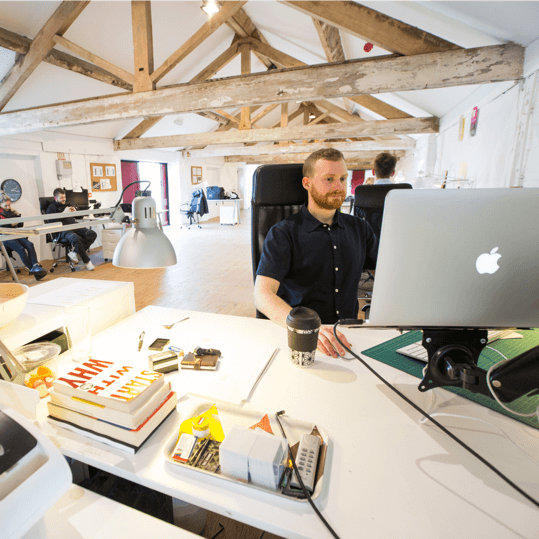When businesses think about creating an engaging digital presence, they often hear two terms used together: UI (User Interface) and UX (User Experience). Although they work hand in hand, they are not the same thing. Understanding the differences between the two is crucial if you want to build a website or app that not only looks beautiful but also converts visitors into loyal customers.
For companies investing in website design in Dubai, mastering the balance between UI and UX can give them a competitive edge. Similarly, businesses offering UI UX design in Dubai and website development in Dubai need to align these elements to deliver seamless, high-performing platforms.
1. Defining UI Design
User Interface (UI) design focuses on the visual layer of a product — the part users see and interact with. It’s about crafting an attractive and consistent interface that makes it easy for people to navigate your site or application.
UI designers consider typography, color palettes, icons, buttons, forms, and spacing. For example, if you’re working with an agency specializing in website design in Dubai, the UI team will ensure your site matches your brand identity and appeals to your target market, whether they are local customers or international visitors.
2. Defining UX Design
User Experience (UX) design is broader. It looks at the overall journey a person has with your product or service, from the first click to the final conversion — and even beyond.
UX designers focus on usability, accessibility, and satisfaction. They research user behaviors, build personas, and create wireframes or prototypes to test how people interact with a product before it’s launched. Agencies offering UI UX design in Dubai often conduct workshops and usability tests to ensure a website or app meets the expectations of diverse audiences.
3. The Relationship Between UI and UX
Think of UI as the “look” and UX as the “feel.” A stunning website with poor navigation frustrates users, while a perfectly planned journey without appealing visuals may fail to inspire trust.
For businesses seeking website development in Dubai, success lies in integrating both. Developers, designers, and strategists must collaborate so that every page is not only visually polished but also intuitive and fast.
4. Why the Difference Matters in Dubai’s Market
Dubai’s digital landscape is unique, serving a multicultural population and highly competitive industries. Whether you’re in hospitality, retail, finance, or tech, customers expect premium experiences online.
A company providing website design in Dubai can’t simply rely on generic templates; it needs a strong UI to reflect quality and credibility. Meanwhile, UX must account for different browsing habits, languages, and cultural preferences. This is where specialized UI UX design in Dubai services become essential.
5. How UI Affects Lead Generation
UI elements such as buttons, forms, menus, and color schemes directly impact how easily visitors interact with your site. A clear “Book Now” button or an inviting contact form encourages users to take action.
Good UI also supports branding. Cohesive fonts, high-resolution images, and consistent icons build trust and make your business look professional. In website development in Dubai, incorporating well-crafted interfaces can set your platform apart from competitors.
6. How UX Influences Customer Retention
While UI may attract users initially, UX keeps them coming back. A smooth checkout process, logical content hierarchy, and accessible layouts make people want to stay longer — and return later.
For example, an e-commerce site with a fast-loading catalog, transparent shipping information, and easy returns creates a positive perception of the brand. That’s why agencies focusing on UI UX design in Dubai place heavy emphasis on testing and refining user journeys.
7. Collaboration During Website Development
Modern website development in Dubai projects often involve teams of developers, UI designers, UX strategists, and SEO specialists working together.
UI designers prepare style guides and high-fidelity mockups.
UX designers analyze customer data, map flows, and test prototypes.
Developers bring both to life with clean code, responsiveness, and performance optimization.
When all three roles align, you get a site that looks amazing, functions flawlessly, and meets business goals.
8. Best Practices for Businesses in Dubai
To maximize results from your digital platforms, consider these tips:
Invest in research: Learn about your audience’s preferences and behaviors before starting design.
Prioritize responsiveness: With Dubai’s high mobile usage, ensure both UI and UX are optimized for smartphones and tablets.
Focus on speed and security: Fast, secure sites enhance both UX and SEO performance.
Test regularly: Gather user feedback and refine your interface and experience over time.
Partner with experts: Agencies offering UI UX design in Dubai and website development in Dubai understand local trends and can create solutions tailored to the region.
Final Thoughts
UI and UX are two sides of the same coin. A beautiful interface (UI) without a smooth experience (UX) won’t deliver long-term success, and a perfectly engineered journey with weak visuals may fail to inspire trust.
For brands investing in website design in Dubai, understanding these distinctions ensures you allocate resources effectively and get the most out of your online presence. By partnering with specialists in UI UX design in Dubai and website development in Dubai, you can build platforms that delight users, reflect your brand values, and drive measurable business growth.




